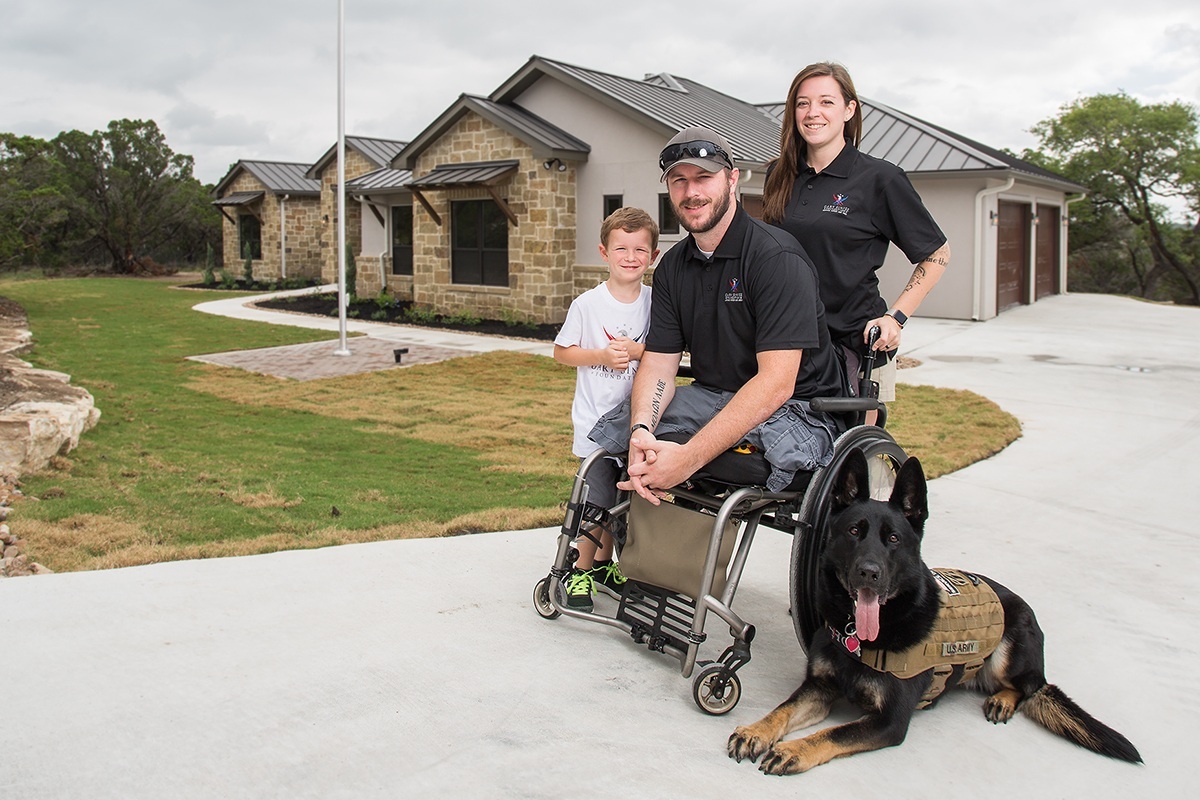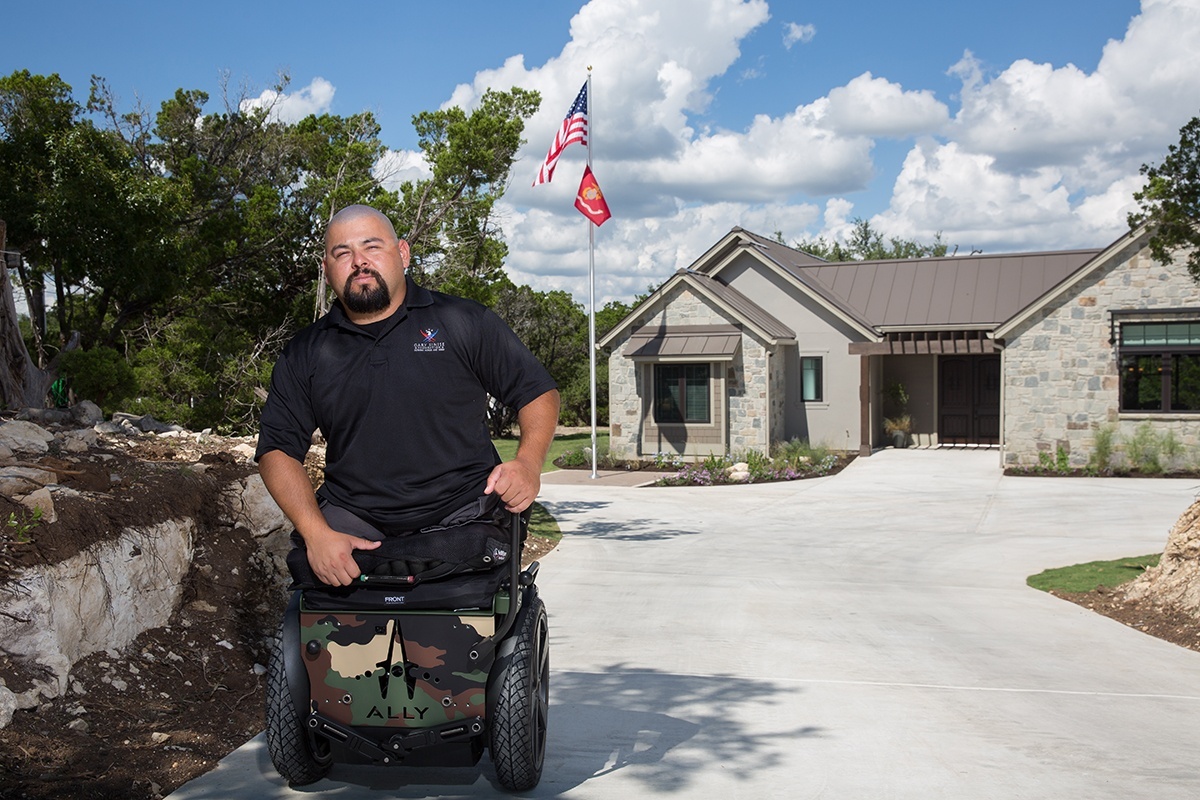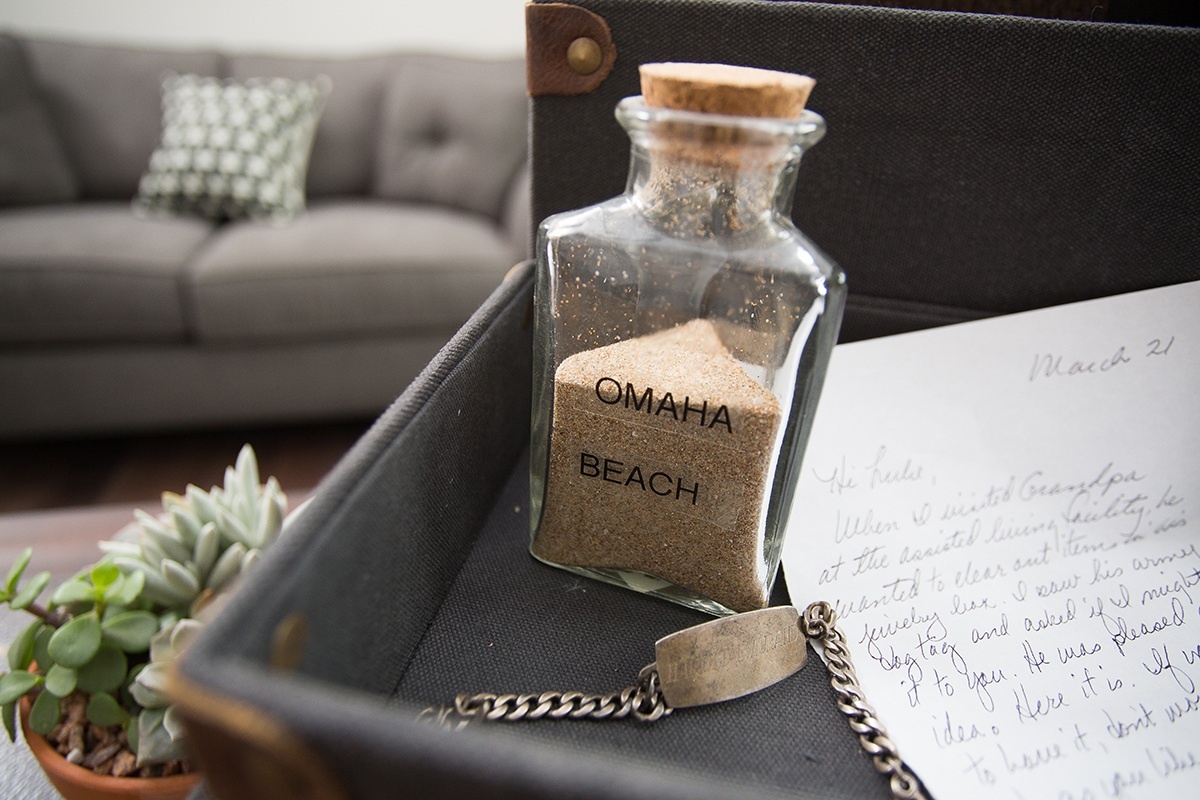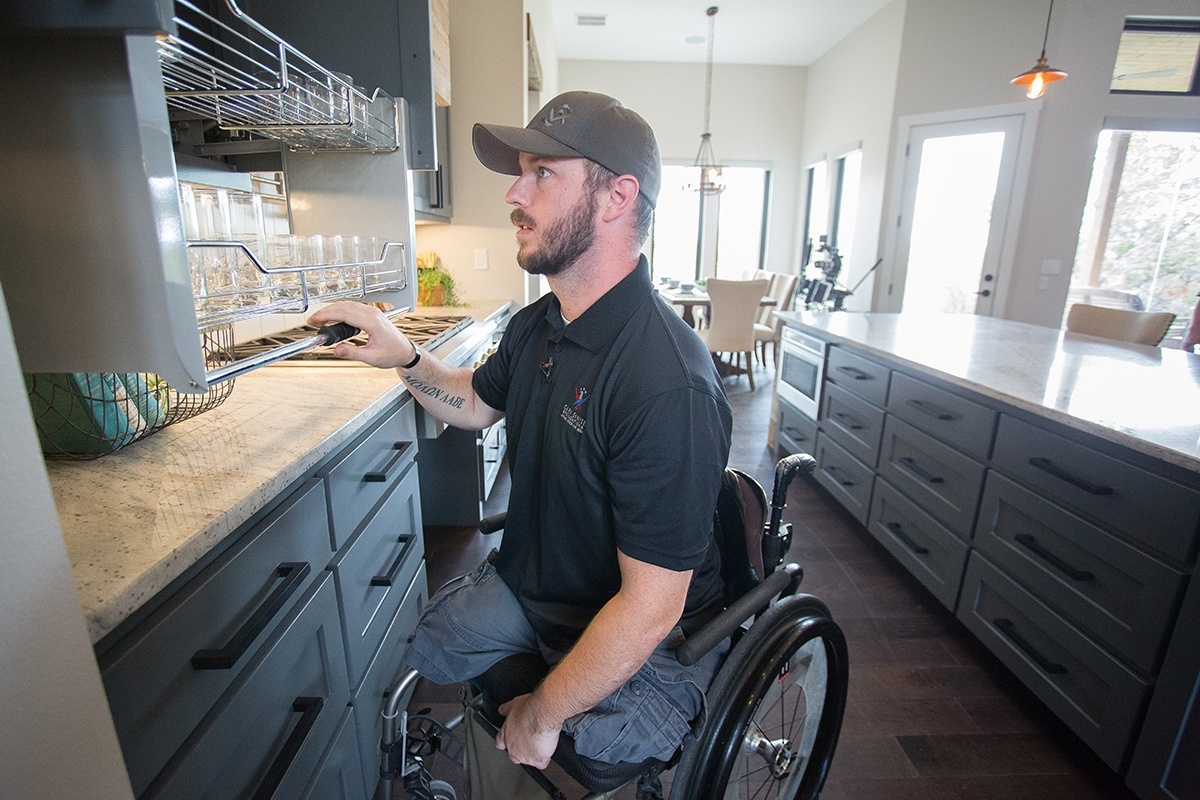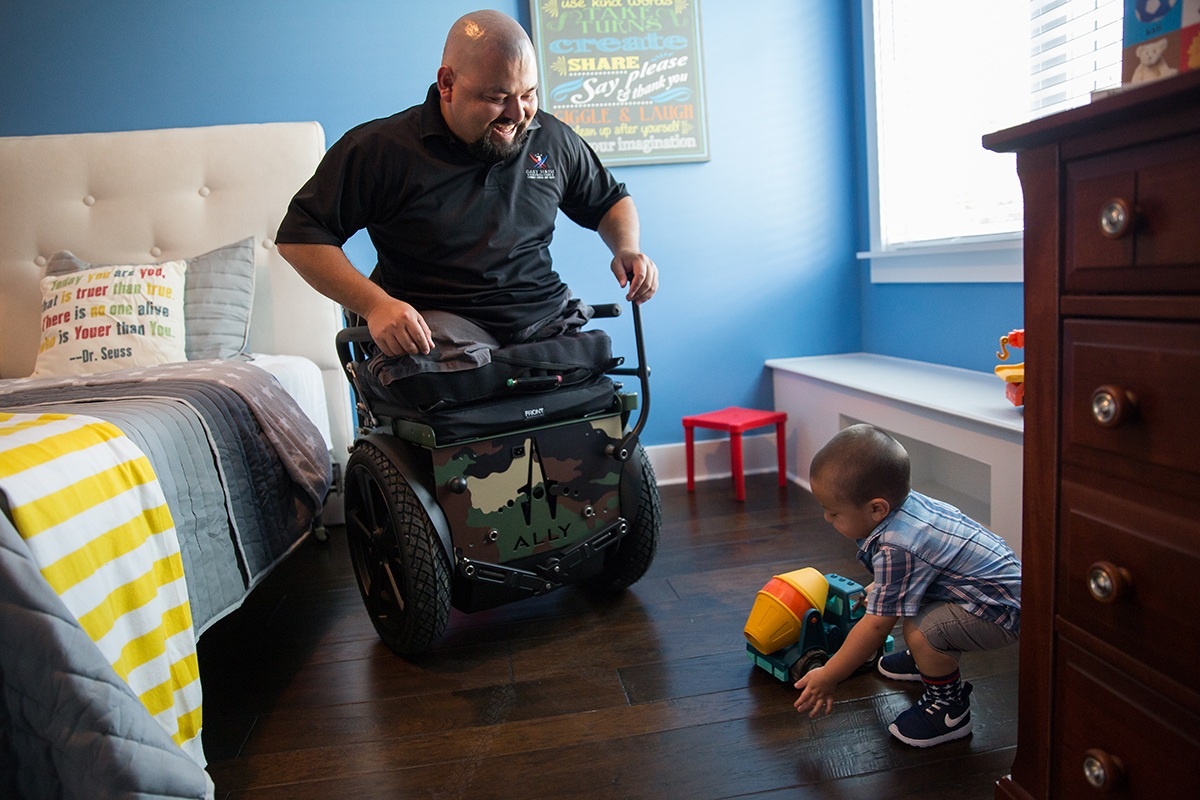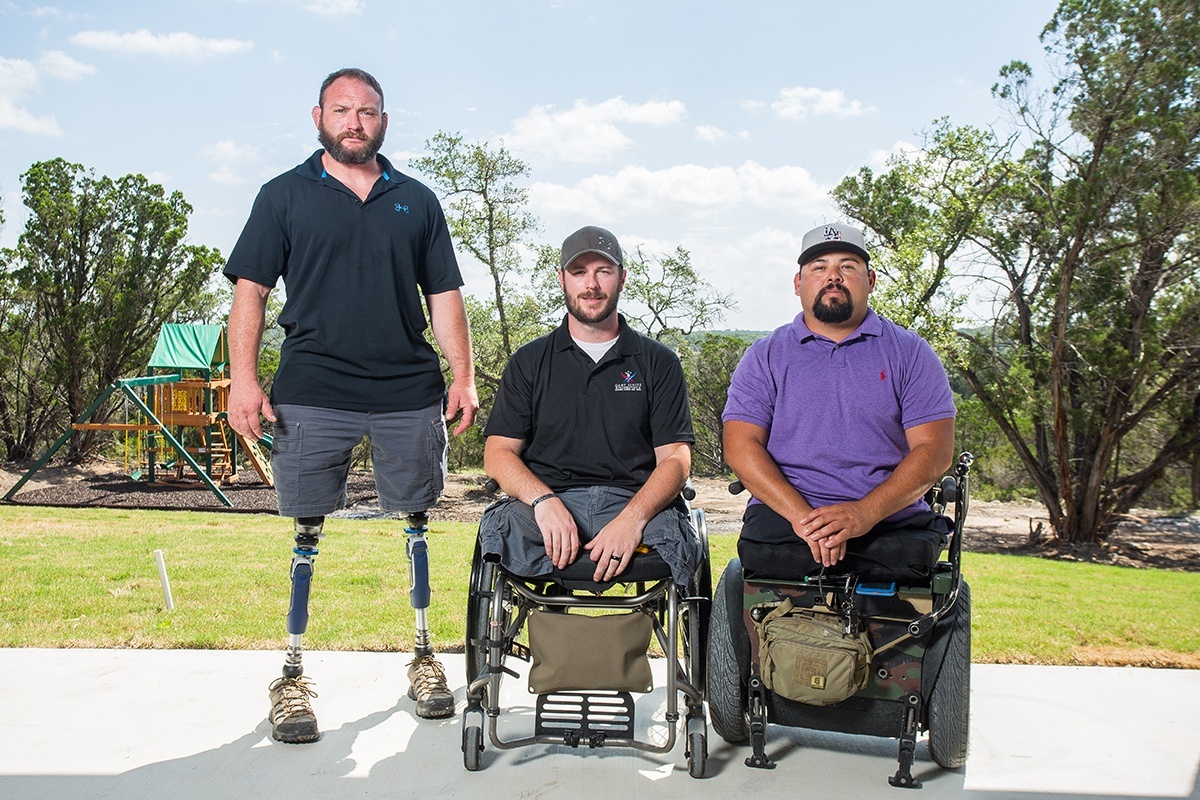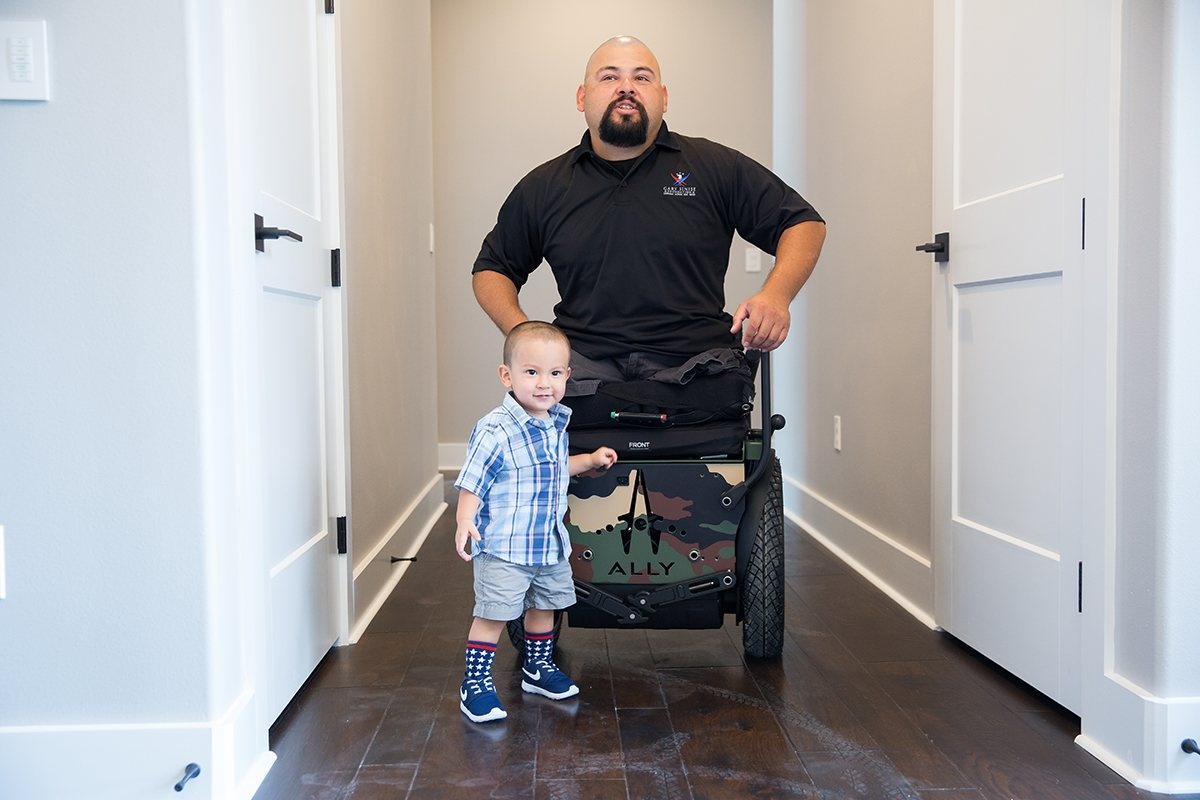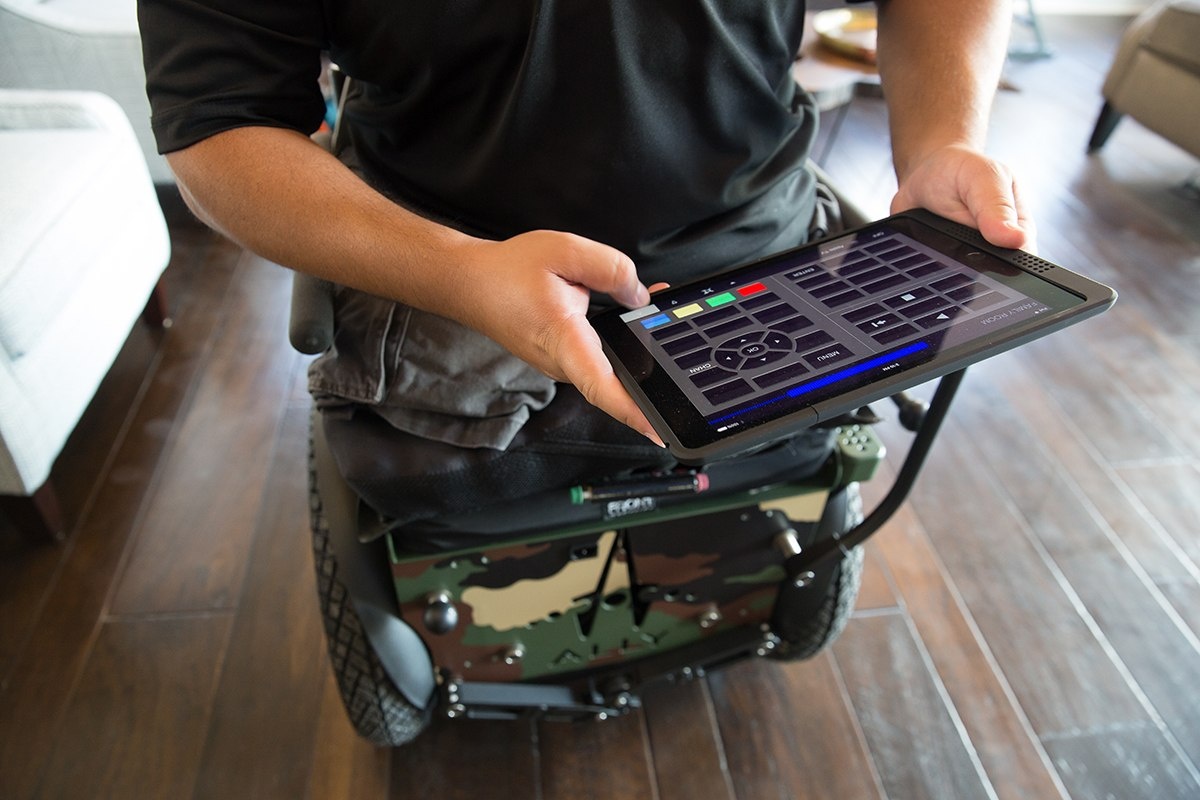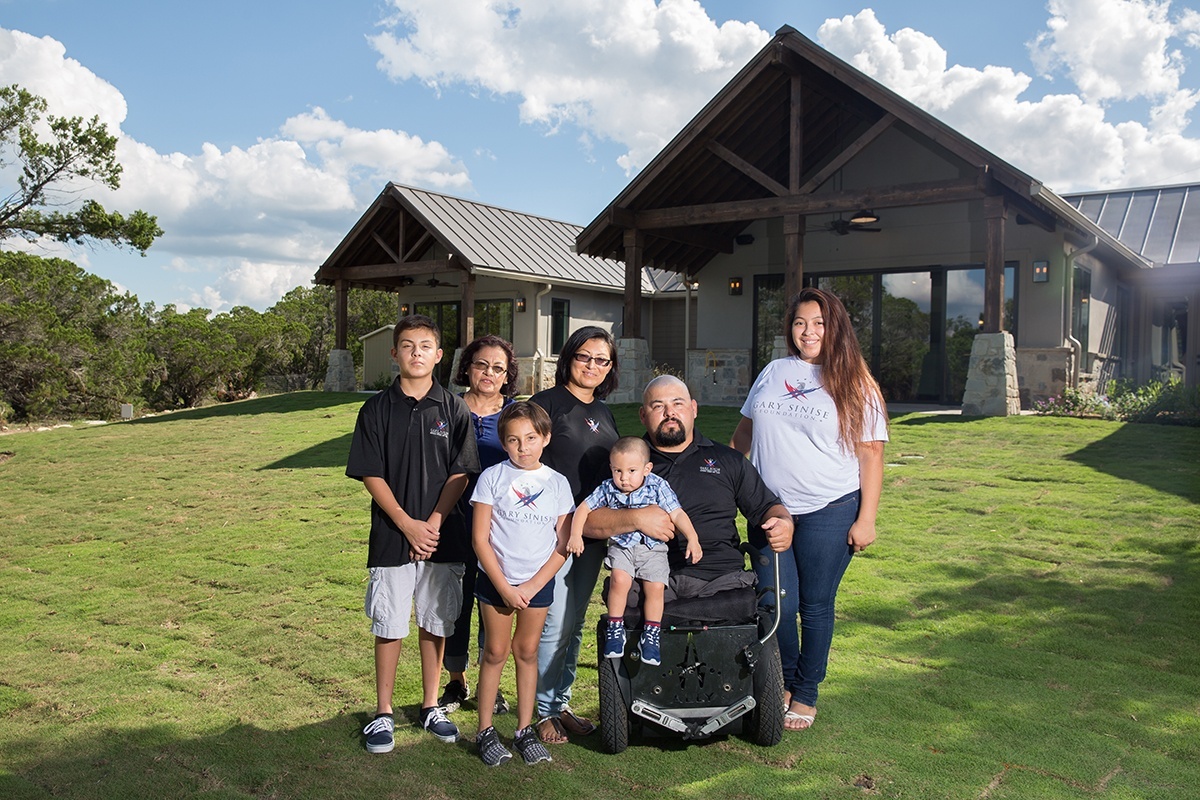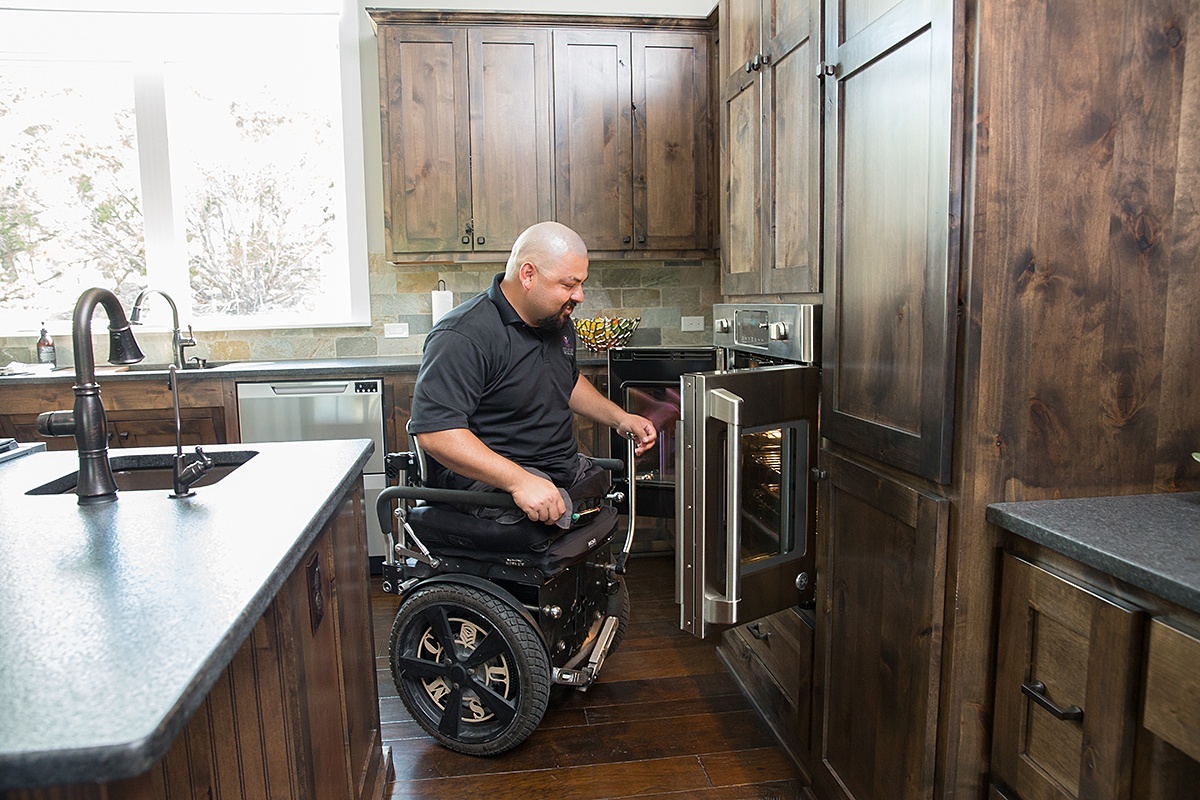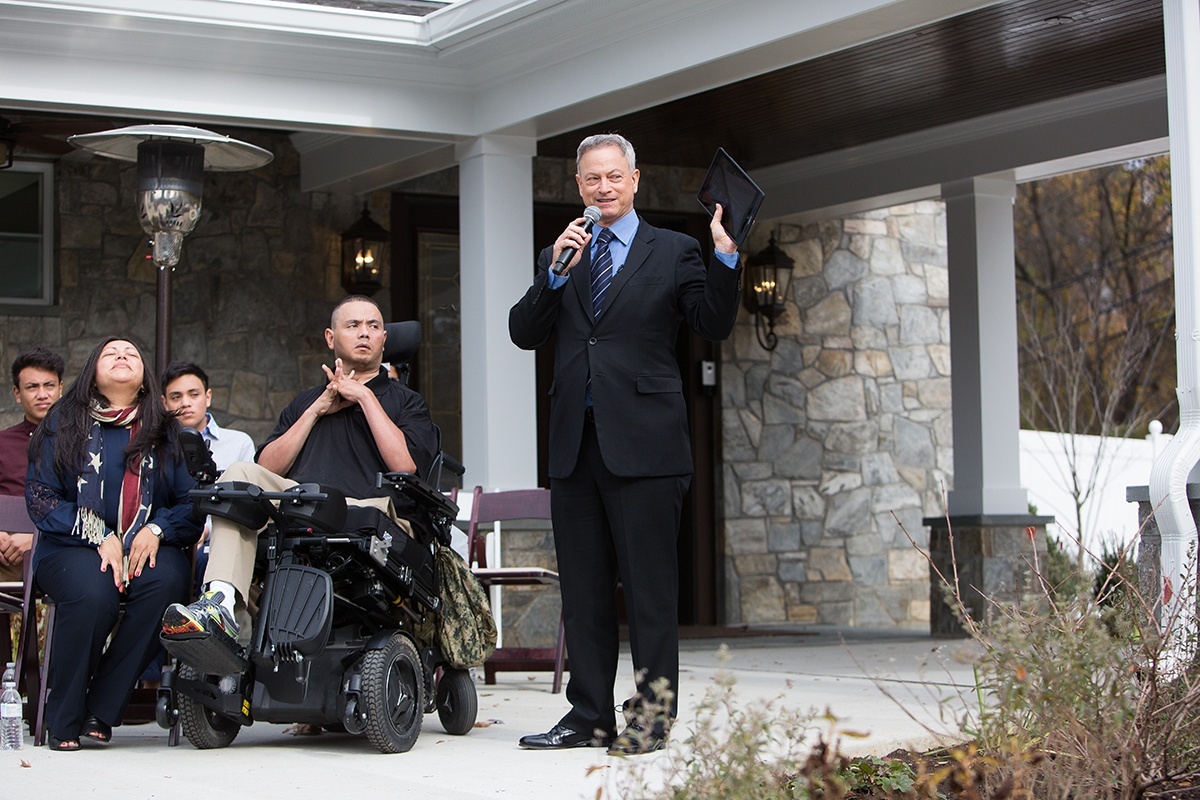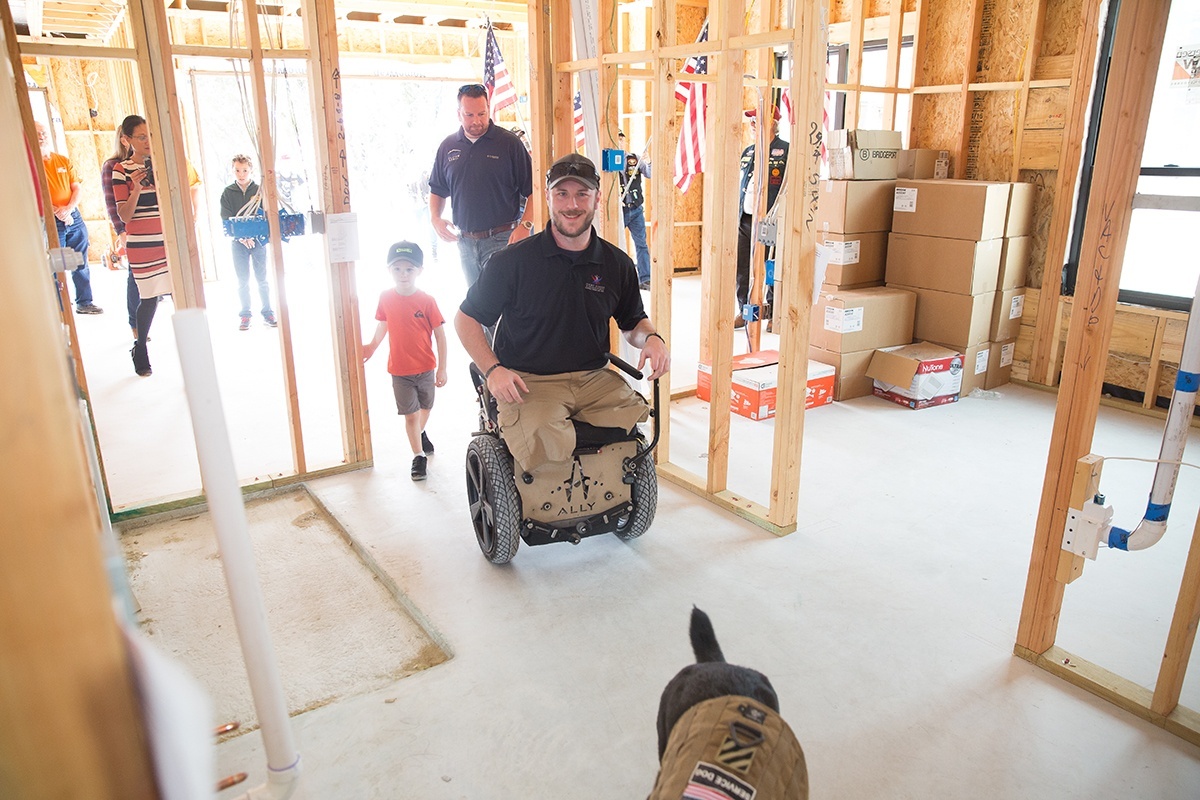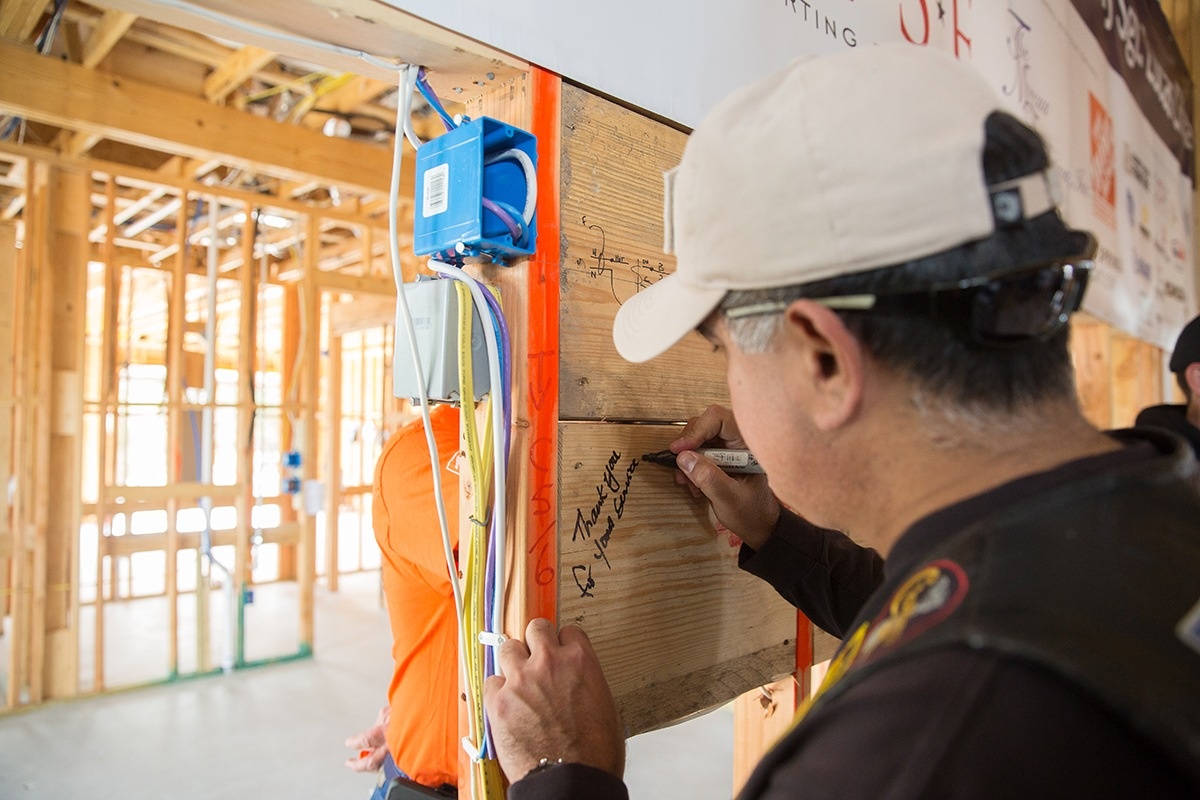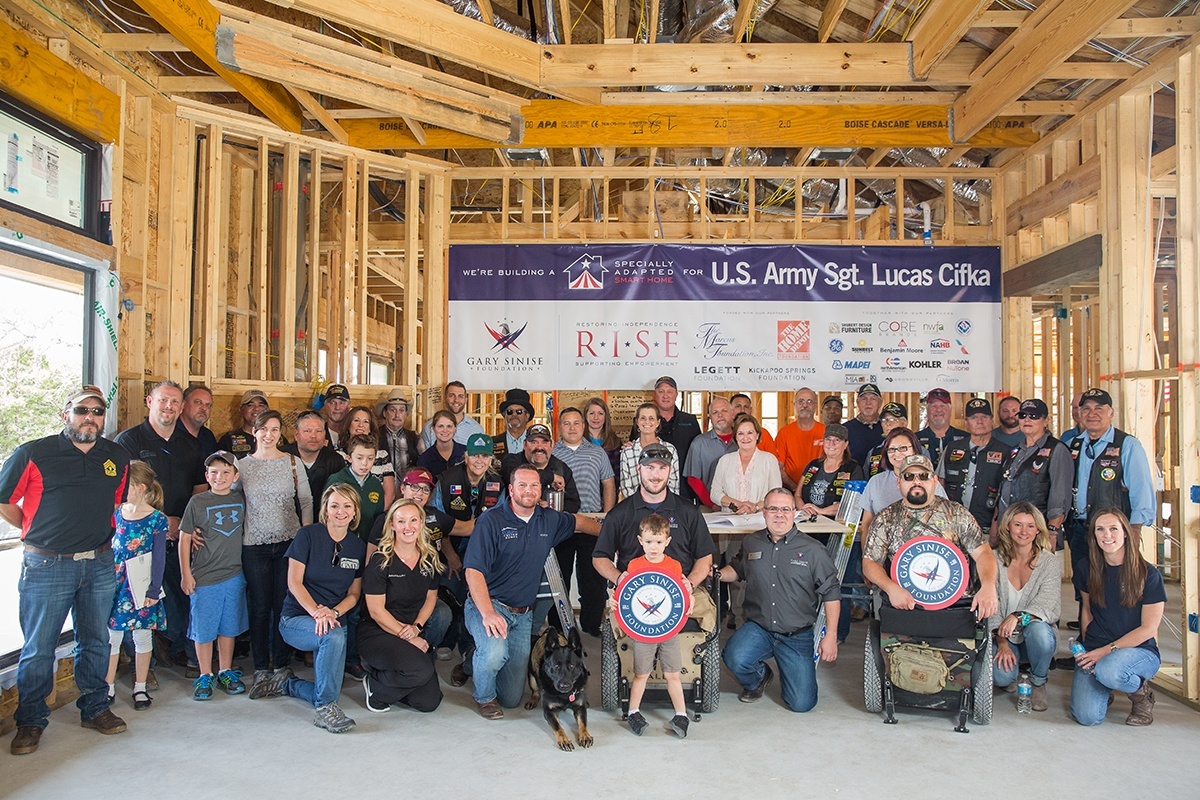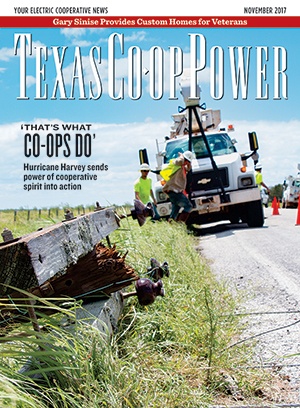In May 2013, Lucas Cifka almost lost everything. The 6-foot-1-inch Army sniper from Olympia, Washington, stepped on a pressure-plated IED while on foot patrol in eastern Afghanistan.
“I remember the medic running over, and I was helping to put the tourniquet on, and they immediately put them very high up on my legs, and I knew that wasn’t good because you only do that as a last resort,” Cifka says. “I realized very quickly that I was bleeding to death, and the first thought that went through my mind was: I’ve got a 3-month-old baby at home, and I can’t die on this hilltop.”
The blast took both legs, fractured his pelvis, hands and face, and left him with a traumatic brain injury. Cifka, his wife, Kait, and young son, Wyatt, spent more than two years at Walter Reed National Military Medical Center in Washington, D.C. He endured more than 30 surgeries to restore his ability to perform everyday tasks and walk with prosthetics.
On a hot July day this year, Cifka, now a retired sergeant, and his family had a special homecoming in Canyon Lake, where they moved into a specially adapted smart home built by the Gary Sinise Foundation’s Restoring Independence Supporting Empowerment program.
The Gary Sinise Foundation launched in 2011, when the Academy Award-nominated actor helped build a home on Staten Island, New York, for Brendan Marrocco, the first surviving quadruple amputee from the war in Iraq. After Marrocco, there was another quadruple amputee in need. Then another.
Sinise builds on a long history of special support for veterans. In the 1980s, he reached out to Vietnam vets, offering a night out at the Steppenwolf Theatre, which he co-founded in his native Chicago. During the 1990s, he started work for the Disabled American Veterans organization. His seminal role as double-amputee Lieutenant Dan in the 1994 film Forrest Gump amplified his outreach with USO tours and the creation of the Lt. Dan Band, which performs more than 20 shows every year to raise spirits and money for veterans and first responders.
“We have a whole new generation, because of 9/11, of real-life Lieutenant Dans out there,” Sinise says. “My foundation is sort of the umbrella to bring people together. I wanted to create a foundation that would offer the American people this way forward if they wanted to help veterans.”
In Cifka’s new home, every room is wheelchair-accessible, including the shower. “I can sit right here, take a shower, controls are all right here,” he says, gesturing at a panel. “I can turn around and roll through doorways and not hit my hands all the time.”
Moving to the kitchen, Cifka demonstrates the oven, stove, microwave and cabinet pull-downs that he can operate from his chair. “The biggest point of contention for me and my wife was not putting dishes away,” he says. “Now I don’t have any ex-cuse to do that.”
He wheels into his son’s room and watches him play with the green army men, colored blocks and Hot Wheels cars provided by the foundation’s design team. “From day one with this injury, I wanted to be able to take care of my son,” Cifka says. “With this house, I can watch him on my own because I can go everywhere and do everything.”
Next door, Guillermo Tejada knows the hardships of injury and the benefits of the smart-home enhancements. In September 2010, while returning from foot patrol in Afghanistan, Tejada, a gunnery sergeant in the Marines, suffered an IED blast that took both his legs above the knee, ruptured an eardrum and inflicted devastating injuries to his left arm and hand as well as his brain.
Before receiving his new smart home, Tejada struggled with the everyday tasks required of a young father. “When I can’t do something or I have a limitation because of my disabilities, it takes [me] back to that day that it happened,” he says. “After something catastrophic like this happens, it’s the small things that act as a constant reminder that your life is not the same anymore. That can play some pretty bad tricks with your mind.”
Tejada moved into his smart home with wife, Veronica, and their four children in September 2016. He offers a glimpse of the life Cifka and his family can look forward to. “The best thing is being able to get everywhere with no obstacles. Being able to take care of myself without the worry of injuring myself, that’s a big plus. The house has given me back a lot of things that were taken away from me. I’m fully independent.”
A third veteran, Travis Green, also a Marines gunnery sergeant, lives down the street with his four daughters. Green enlisted in 1999 and deployed to Kuwait, Iraq and finally Afghanistan. In September 2011, shortly before the completion of his tour, Green came under fire and lost both legs above the knee to an IED.
His home, completed in 2015, made space for his girls and a base of operations for his business, Stump Armour, which makes affordable, durable prosthetic feet for amputees.
All three veterans in the Canyon Lake area are members of Pedernales Electric Cooperative.
Cifka is appreciative of his new neighbors. “Already knowing two people in the neighborhood who are both in similar circumstances, who have kids who are used to seeing combat-wounded people, there’s a lot of camaraderie right there.”
“It’s a million little things that all add up to a brand-new life. The Gary Sinise Foundation is part of our extended family, and we’ll never be able to put into words what this means for our family,” says Cifka.
Working with more than a dozen charitable organizations and corporations, the Gary Sinise Foundation has completed 38 homes, with another 22 under construction across the country by the end of 2017. The families move into their fully furnished homes without a mortgage to pay.
Brad Morris, senior project manager for the RISE program, oversees the construction of many of these homes. Morris is a former Marine and owner of G. Morris Homes, a custom homebuilder in Bulverde, just north of San Antonio. “Being a combat veteran myself, I found the opportunity to merge two passions, homebuilding and veterans’ causes, into…one of the most rewarding experiences of my life,” says Morris.
The list of adaptations is long, explains Morris: wider hall-ways and doorways, zero-height thresholds, large showers with benches and handheld shower heads, bathrooms with expanded turning areas, grab bars, lighting controls, video-enabled security and intercom systems, along with home-automation features controlled with an iPad or iPhone. Some veterans need motorized lifts to get in and out of bed, special accessible bathtubs, or voice and motion activation.
“These homes are designed and built specifically to meet the needs of the veteran and his family and to restore their independence,” says Morris. “These homes remove all physical barriers that many of us may not realize even exist.”
The foundation has plans for three more homes in Texas this year—in Lakeway, Southlake and McKinney.
“Many years ago, when I began this journey, it became abundantly clear that we can never do enough for those who serve and sacrifice while defending and providing our precious freedom and liberty,” says Sinise, “but I also learned we can always do a little more.”
——————–
Learn more about Julia Robinson at juliarobinsonphoto.com.
